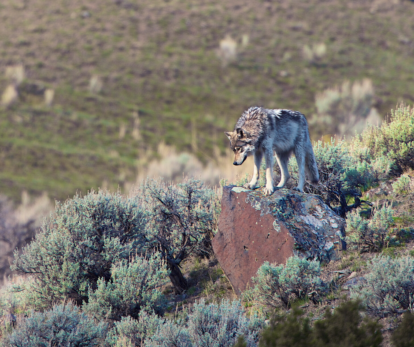Short Form Videos for Ethical Businesses


Early in September 2022, numerous online press sources ran with the headline, “Fashionable Beckhams to follow trend for rewilding”. On the one hand, this news story may have helped to push rewilding into mainstream conversations about conservation but, on the other hand, it unhelpfully suggests that rewilding is a passing fad.
In reality, rewilding may be the key to restoring natural habitats and biodiversity and mitigating climate change.
In 2020, a study published in the journal, Nature, found that if a third of the planet’s most degraded natural landscapes were to be restored, it could prevent around 70% of predicted species extinction.
And this is just one of the benefits of rewilding on a global scale. It’s also known to soak and store carbon dioxide, reverse biodiversity loss, improve soil health and waterways, and mitigate extreme weather events, as well as improve employment opportunities and galvanise communities.
What do we mean when we talk about rewilding?
Rewilding Britain defines it as “the large-scale restoration of ecosystems to the point where nature is allowed to take care of itself”. In other words, it means helping nature to heal by returning lands to their purpose and returning species to their lands.
The practicalities of rewilding look different in different parts of the world.
Rewilding is about more than simply planting trees, which is what people often focus on when highlighting ways to tackle the climate crisis. Yes, planting trees can help to reduce greenhouse gas emissions, but if we were to turn areas into woodland that haven’t been woodland in the past, it can damage biodiversity, reducing nature’s resilience to change.
Rewilding is about reinstating the natural processes of savannahs, peatlands, wetlands and the sea, as well as addressing deforestation. Whatever a habitat once was, it’s about enabling it to be that once again.
Broadly speaking, rewilding is based on three central concepts (often referred to as the three Cs): Cores, Corridors and Carnivores.
The first task of any rewilding project is to identify wild (or potentially wild) core areas, determine what habitats are present and assess the general health of the ecosystem, and then protect those core areas as the ecosystem is allowed to heal.
Where and when appropriate, missing species should be returned to the ecosystem.
Ideally, there should be scope for corridors of rewilded land between the core rewilding sites. This enables species to move between habitats according to their needs, allowing for greater biodiversity.
The third key component of rewilding is reintroducing “apex” predators. These are predators at the top of the food chain – appropriate to the core area – who keep populations of other species in balance and at a sustainable level without decimating the area.
One of the most successful examples of reintroducing apex predators can be found in Yellowstone National Park.
Between 1994 and 1996, 31 grey wolves were released in Yellowstone and central Idaho; this reintroduction “triggered a still-unfolding cascade effect among animals and plants” (this is a process known as a trophic cascade).
Prior to the reintroduction of the wolves, the lack of predation (other than from black and brown bears, cougars and coyotes) meant that the elk population had grown to the limits of what Yellowstone could sustain. In addition, the elk didn’t need to move around as much during the winter, which meant they fed intensively on concentrated areas of young willow, aspen and cottonwood plants. This had a knock-on effect on other species, particularly beavers, who rely on willow plants for sustenance in the winter.
As beaver numbers in Yellowstone began to dwindle, the waterways were affected, as were the vegetation, land animals, fish and birds that rely on them.
Reintroducing wolves to Yellowstone enabled beaver colonies to thrive and even though there are three times more elk in the park today than were recorded in 1968, willow is found in abundance because the elk have to be more vigilant, moving frequently and grazing less to keep ahead of the wolves; this means they forage less intensively.
As the beavers have built more dams and ponds, the waterways are thriving and, with them, the species they sustain.
Another benefit of reintroducing wolves is that, by killing deer and elk, they provide food for scavenger species, such as ravens, eagles, coyotes, lynx, beetles and bears emerging from hibernation.
The Yellowstone rewilding using grey wolves has been so successful that its example sits at the heart of a journal article titled Rewilding the American West, in which 20 scientists propose rewilding large reserve areas owned by the US federal government to help address the consequences of climate change in the US.
As we can see from the example above, ecosystems rely on a delicate balance between species that need one another for survival. Rewilding trusts the natural processes that keep everything in harmony. It’s about reinstating these processes, including missing species, and then stepping back to allow them to shape their habitats.
As mentioned at the start of this article, rewilding matters for many reasons. Here are just a few:
Currently, around just 2% of the finance devoted to tackling the global climate crisis goes to nature recovery or rewilding and yet natural climate solutions offer the most low-cost and effective ways to address climate change.
This lack of funding means that rewilding projects aren’t currently as widespread as we might hope. Even if there isn’t a project on your doorstep, you can get involved by supporting organisations, rewilding your own outdoor spaces and putting pressure on politicians and others to back rewilding.
The good news is that March 20th is now World Rewilding Day, representing an increase in public awareness. This day was launched by the Global Rewilding Alliance, which now has more than 125 partner organisations rewilding more than 100 million hectares across 70 countries. A shift is happening.
On 28th July 2022, the United Nations General Assembly endorsed the “human right to a clean, healthy and sustainable environment”. It also recognised that “the impact of climate change, loss of biodiversity, unsustainable use of natural resources and pollution of air, land and water interfere with the enjoyment of this right”.
Rewilding offers a solution, the antidote to these issues. It also recognises that a clean, healthy and sustainable environment is a right for all life on earth, not a privilege solely afforded to humans.
You can find out more about some of the world’s rewilding projects and how to support rewilding on the following websites: